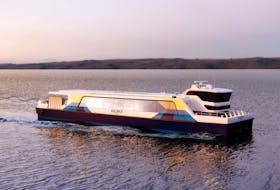Every hydroelectric project, like every petroleum refinery, is in some ways unique.

Refineries are often deliberately designed and built to handle the particular feedstock — the type of crude oil — that they expect to refine. Is the feedstock heavy oil? Does it have high sulphur content? Is it particularly waxy?
All of that’s important when you look at what kind of systems you need to process the crude oil effectively. After all, the margins in the refinery business are traditionally very slim; you want, therefore, to make the absolute best use you can of the crude oil you’re processing.
Hydro projects are unique, too — they work in similar ways (somewhere, water is going to spin a generator) but geography, geology and water flows dictate different types of construction and technology. Simply put, they are not “off-the-shelf” developments — each one has its own specific design twists and turns.
But when the Muskrat Falls Inquiry makes its way into its next phase — when the inquiry turns its attention to the dramatic increases in costs that happened after project sanction and why those increases occurred — I hope the inquiry finds some time to look at a hydroelectric project that’s going a whole lot better for ratepayers.
And that’s the Romaine project in Quebec.
Why do I hope it comes up?
Well, Romaine and Muskrat Falls may well be different projects in different provinces with different and unique circumstances.
But some parts of them are remarkably similar.
Both Romaine and Muskrat Falls were taking place in similar environments, both in time frame and in geography. Both are relatively remote developments, and both were occurring during the same booming construction years in Canada. (The Romaine River flows south out of Labrador and eventually into the St. Gulf of St. Lawrence.) Both had long-distance transmission lines, with the Muskrat Falls single bipole line running some 1,600 kilometres, and Romaine ’s four power lines running a total of 500 kilometres.
And both were, at one point, carrying similar budgets: around $6.5 billion.
Muskrat Falls is now looking at a $12.7-billion price tag.
Nalcor has argued that costs rose because new things arose: labour costs were higher than expected, big bid packages came in more expensive than anticipated, schedules weren’t met due to overall low labour and contractor productivity, and the list goes on.
Hydro-Québec’s Romaine was unrolling in the same time window — the project’s construction started in 2009, with a scheduled completion date of 2020 for the final generating station. Muskrat Falls was sanctioned in 2012 and is now not scheduled to reach full power until 2020 as well.
Yet Romaine — four sequential generating complexes on the Romaine River, with the last one, Romaine 4, set to come online just as the Muskrat Falls project finally provides full power — is both on schedule and on budget. Three of the generating stations are already generating power, the latest one, Romaine 3, coming onstream in September 2017.
If the argument is going to be made that market-driven budget increases were beyond Nalcor’s control, why did the same market not hit Romaine the same way?
So, if there were substantial market-based issues that combined to topple Muskrat Falls off schedule and off budget, why did those same market concerns not hit Romaine ?
If the argument is going to be made that market-driven budget increases were beyond Nalcor’s control, why did the same market not hit Romaine the same way?
“Things changed, and they were out of our control” is a fine excuse for why costs have essentially doubled — but the question I have is, why didn’t those same changes hit another isolated power project in the same way?
If the commission of inquiry accepts that the bulk of the cost increases were a function of the construction and contracting terrain and were essentially unforseeable, why is Romaine an outlier to those effects?
How did the designers of Romaine foresee the unforeseeable? Or were their budgetary estimates simply more reasonable from the very beginning?
Romaine will deliver a combined total of 1,550 megawatts of power, electric power that’s going to cost 6.4 cents a kilowatt hour. Muskrat Falls, if the province’s water management legislation survives inevitable court challenges, is going to supply about half that much, with power that, once it reaches its major market on the Northeast Avalon, will cost four times as much.
One of these things is not like the other.
I’d love to know why.
Recent related articles
EDITORIAL: Don’t skimp on questions
Russell Wangersky’s column appears in 36 SaltWire newspapers and websites in Atlantic Canada. He can be reached at [email protected] — Twitter: @wangersky.








